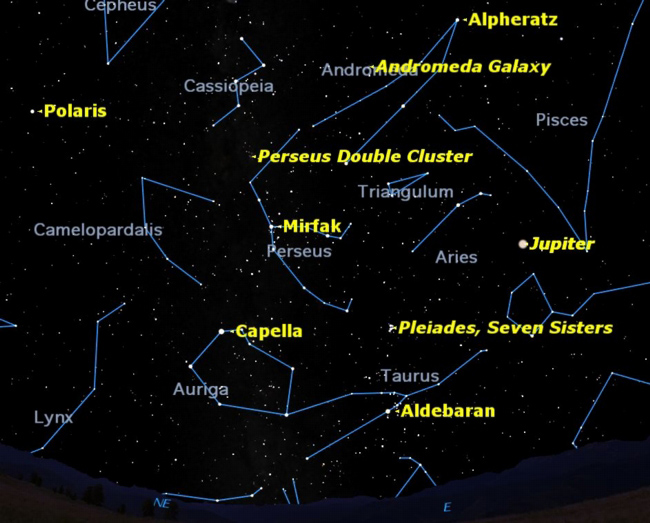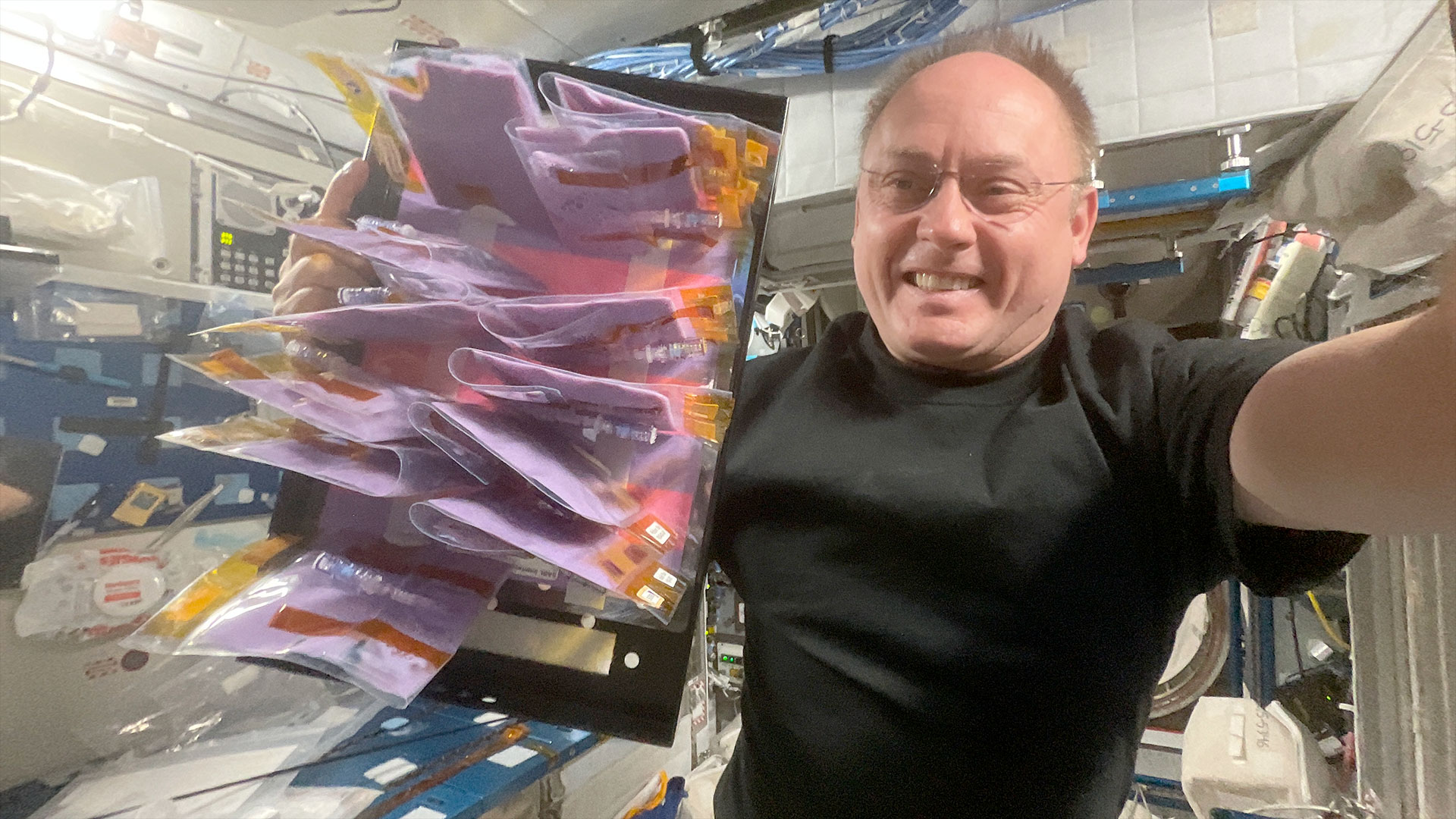October's Skywatching Treats for Halloween

The eastern sky these fine late October nights is filled with deep sky treats for stargazers of all types. There is a bit of something for everyone.
For the naked eye observer, the first of the brilliant stars of winter start to peek over the eastern horizon: Capella and Aldebaran. Three of the nearest galactic star clusters are visible to the naked eye: the Pleiades, the Hyades, and the Perseus Moving Cluster.
The October night sky map here provides a reference showing where to look to see this month's night sky treats.
Galactic star clusters are groupings of stars which share a common origin relatively recently on the astronomical time scale. Their stars are often similar in color and brightness, and share a common motion through the galaxy.
The Pleiades is a compact cluster of young bright stars located 410 light-years from the sun. It was known as the Seven Sisters in antiquity, although really only six stars are easily counted with the naked eye. How many can you see? Its Japanese name is Subaru, and its six brightest stars are well depicted in the logo of this Japanese car manufacturer.
The Hyades is much closer to us than the Pleiades, 150 light-years away, but its stars are older and fainter than those of the Pleiades, so it covers a much larger area of the sky. It is easily spotted as it appears to surround the bright red giant Aldebaran.
But, this is merely an accident of perspective, as Aldebaran is only 65 light-years away, much closer to us than the Hyades.
Breaking space news, the latest updates on rocket launches, skywatching events and more!
The Perseus Moving Cluster is less well known than the Pleiades and Hyades. It surrounds Mirfak, also known as Alpha Persei, which is 593 light-years away and an actual member of the cluster. [Haunting Photos of Spooky Nebulas]
Although all three of these clusters are easily visible from a dark sky site with the naked eye, they all benefit from a closer look with binoculars. Look in particular for the many pretty pairs of stars they contain.
Under very dark skies, the Pleiades show faint wisps of nebulosity from a dust cloud through which their stars are passing at present.
More October sky treats
Binoculars reveal several other deep sky treats in this part of the sky.
Circling the "north star" Polaris directly opposite the Big Dipper is the bright W-shaped constellation Cassiopeia. The upper part of the "W" points the way to the Andromeda Galaxy, number 31 in 18th century astronomer Charles Messier's catalog of deep sky objects.
In binoculars, the Andromeda Galaxy looks like a small faint cloud. We are seeing only the bright central nucleus; long-exposure photographs reveal that the galaxy is far larger than our moon in the sky.
If you have a telescope and a dark country sky, look for Andromeda’s two satellite galaxies. These are farther away than you might expect from photographs; those same long exposure photographs mislead by making the main galaxy seem much larger than it appears in small telescopes.
Once you’ve located the Andromeda Galaxy in binoculars, see if you can see it with your naked eyes.
In a dark moonless sky it is about the farthest object visible to the naked eye, looking like a tiny wisp detached from the Milky Way. If you spot it, you can say that you’ve observed something over two million light years away with nothing but your unaided eye.
Trick to see star clusters
About halfway between Cassiopeia and Mirfak look for the Perseus Double Cluster. This gives you two galactic clusters for the price of one.
These clusters are much farther away than the first three we looked at. They are about 7,000 and 8,100 light-years away. Early astronomers mistook these clusters for stars, and assigned them the letters "chi" (Greek) and "h" (Roman).
They are also known by their numbers in the New General Catalog: 869 and 884. It’s a mystery why Messier didn’t include them in his catalog, since they are far brighter than many objects he cataloged.
Finally, take a look with binoculars or a telescope at the area around Capella.
The constellation Auriga forms a beautiful circlet of bright stars, enclosing one of the richest areas of the Milky Way. There are many bright star clusters in this area, including three in Messie's catalog.
This article was provided to SPACE.com by Starry Night Education, the leader in space science curriculum solutions. Follow Starry Night on Twitter @StarryNightEdu.
Join our Space Forums to keep talking space on the latest missions, night sky and more! And if you have a news tip, correction or comment, let us know at: community@space.com.

Geoff Gaherty was Space.com's Night Sky columnist and in partnership with Starry Night software and a dedicated amateur astronomer who sought to share the wonders of the night sky with the world. Based in Canada, Geoff studied mathematics and physics at McGill University and earned a Ph.D. in anthropology from the University of Toronto, all while pursuing a passion for the night sky and serving as an astronomy communicator. He credited a partial solar eclipse observed in 1946 (at age 5) and his 1957 sighting of the Comet Arend-Roland as a teenager for sparking his interest in amateur astronomy. In 2008, Geoff won the Chant Medal from the Royal Astronomical Society of Canada, an award given to a Canadian amateur astronomer in recognition of their lifetime achievements. Sadly, Geoff passed away July 7, 2016 due to complications from a kidney transplant, but his legacy continues at Starry Night.
